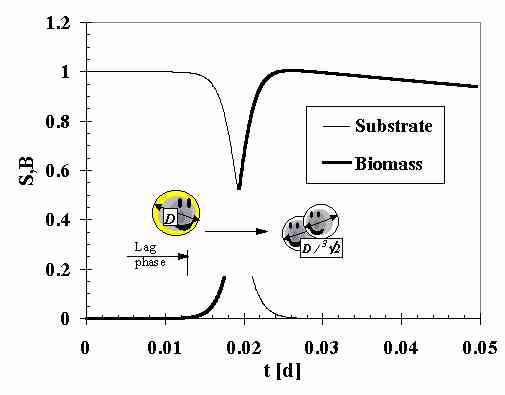 [Excel sheet]
[Excel sheet]Let as assume that the cells (microbes) are spheres of diameter D, which consume either a nutrient transferred from the surroundings (substrate S) or their own resources in hungry days. Further on we will assume that the amount of nutrients needed for a cell is directly proportional to the volume of the cell (volume of sphere =(D3/6) and that the mass flowrate from the surroundings is proportional to the concentration of substrate, [S], and to the surface of the cell (surface of sphere =(D2). This sentence can be translated into an equation describing the time change of the cell size (diameter D)
(11.10)

where the coefficients kS and kD are related to substrate transfer and consumption, respectively. The substrate transfer term, multiplied by the number of cells [X], represents the consumption of substrate,
(11.11)

We need not write an equation for [X], assuming that the division of cells occurs in the time instant when the diameters of the cells reach a prescribed value Dmax (synchronised division), and this is the last (third) model parameter. A solution of Eq. (11.10-11) can be obtained in the same way as previously (e.g., Example 7.3, 11.1.1) and an example of results is shown in Fig.11.14 (time courses of substrate and biomass concentrations).